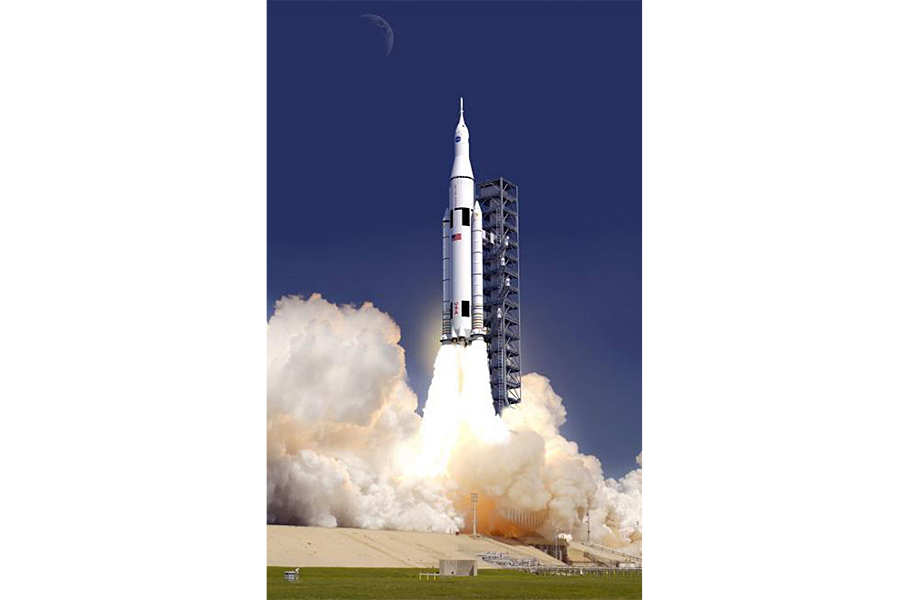Will the US ever have manned space program again?
With its Space Launch System, NASA hopes to take a giant leap into deep space, but the US Government Accountability Office says that the space agency may not have enough money.
According to a GAO estimate released Wednesday, NASA may be $400 million short to complete the project.
The first unmanned test flight of the SLS, which has manned and unmanned versions, is set for late 2017. If on schedule, development to achieve this initial launch is estimated to cost $12 billion.
More powerful than the Saturn V, which carried astronauts to the moon, the SLS – which uses components from the Space Shuttle and the cancelled Constellation program – would be larger than any other launch vehicle ever built. Sitting atop its manned version is the Orion Multi-Purpose Crew Vehicle, which is designed to carry up to four astronauts and their equipment to asteroids, the moon, and even to Mars.
A manned mission to the Red Planet is the ultimate goal, but the SLS could open other doors for American space exploration.
Currently the only way for astronauts to reach even the International Space Station is through Russia. Since the Space Shuttle program shut down in 2011, the Russian space program is the only one in the world capable of manned spaceflight. Each US astronaut heading to the ISS sits in a $71 million seat.
But tensions between the US and Russia over the Ukraine crisis have put into question Russia's relationship with NASA.
When US sanctions threatened that partnership earlier this year, Russian Deputy Prime Minister Dmitry Rogozin didn't hesitate to point out America's reliance on Russian rockets. He took to Twitter, writing, "After analysing the sanctions against our space industry I suggest the US delivers its astronauts to the ISS with a trampoline."
As it isn't physically possible for astronauts to bounce their way to the ISS, NASA sees SLS as a potential way to break that bond with Russia.
But if taxpayer money doesn't stretch far enough to send Americans to space, the private sector may hold solutions. Private companies such as SpaceX and Orbital Sciences Corporation are beginning to gain momentum.
Orbital and SpaceX already each have billion-dollar contracts with NASA to transport cargo to the ISS. To help accomplish this, SpaceX began leasing a launch site from NASA earlier this year. The site, which launched Apollo 11 toward the first manned moon landing in 1969, will now be used for SpaceX's commercial purposes.
SpaceX ultimately aims to help people live on other planets. But in the meantime, they have designed the Dragon spacecraft and two different Falcon launch rockets.
Falcon 9 successfully launched its first Dragon to the ISS in May 2012 to deliver cargo. Originally designed to carry humans, Dragon could serve as a privately-funded counterpart to NASA's Orion, and SpaceX's Falcon Heavy rocket, could perform the same function as the SLS.







